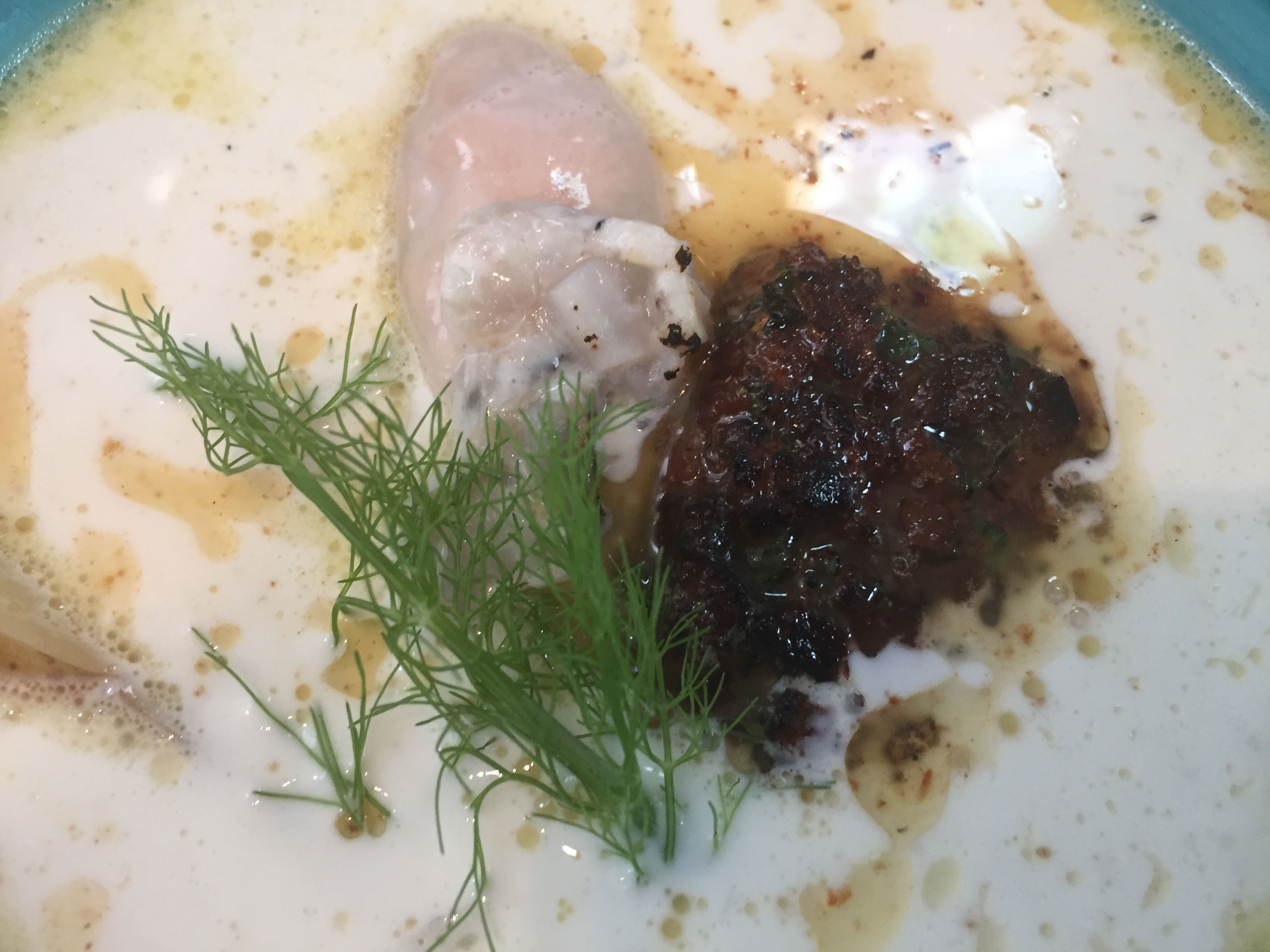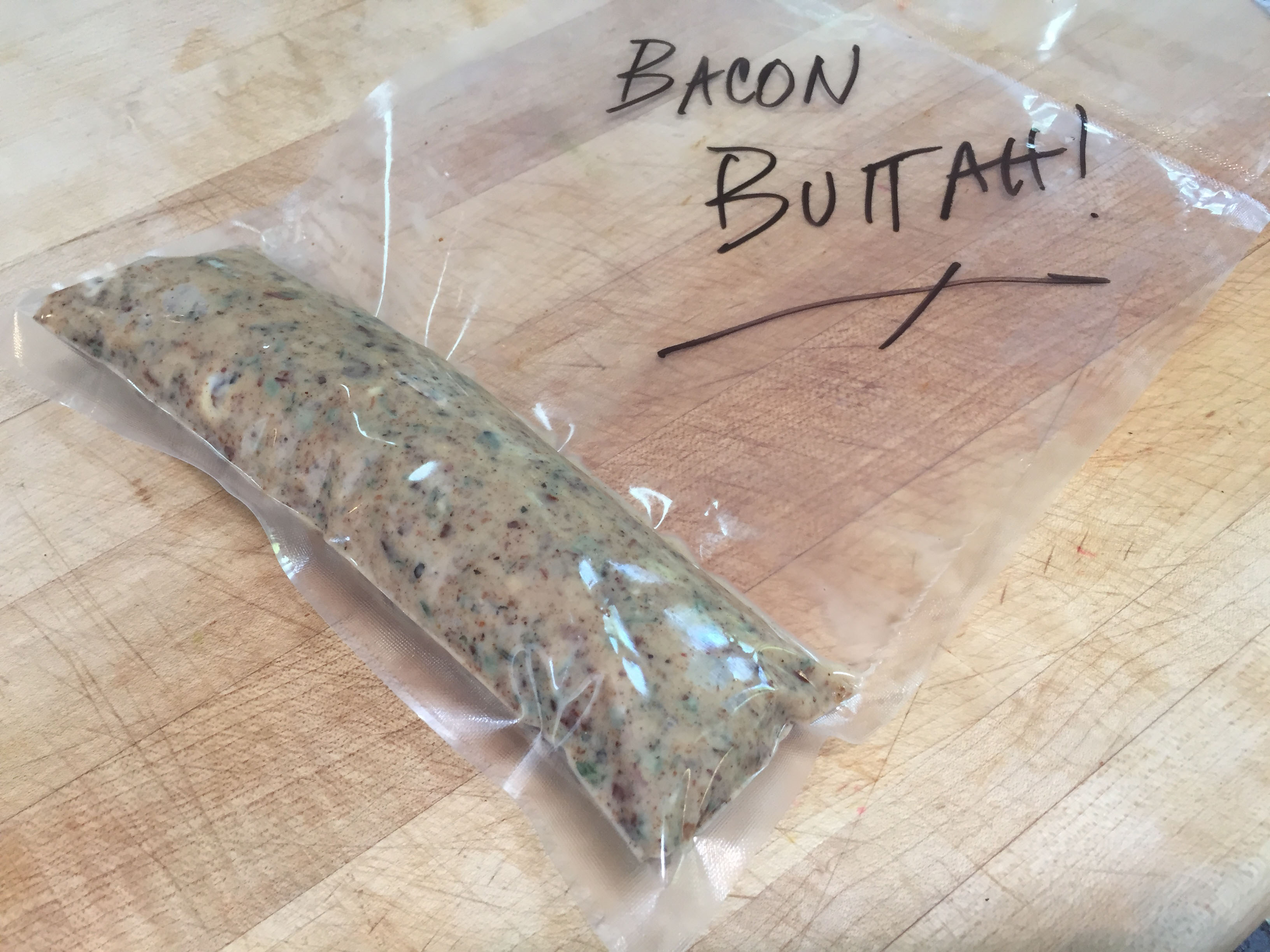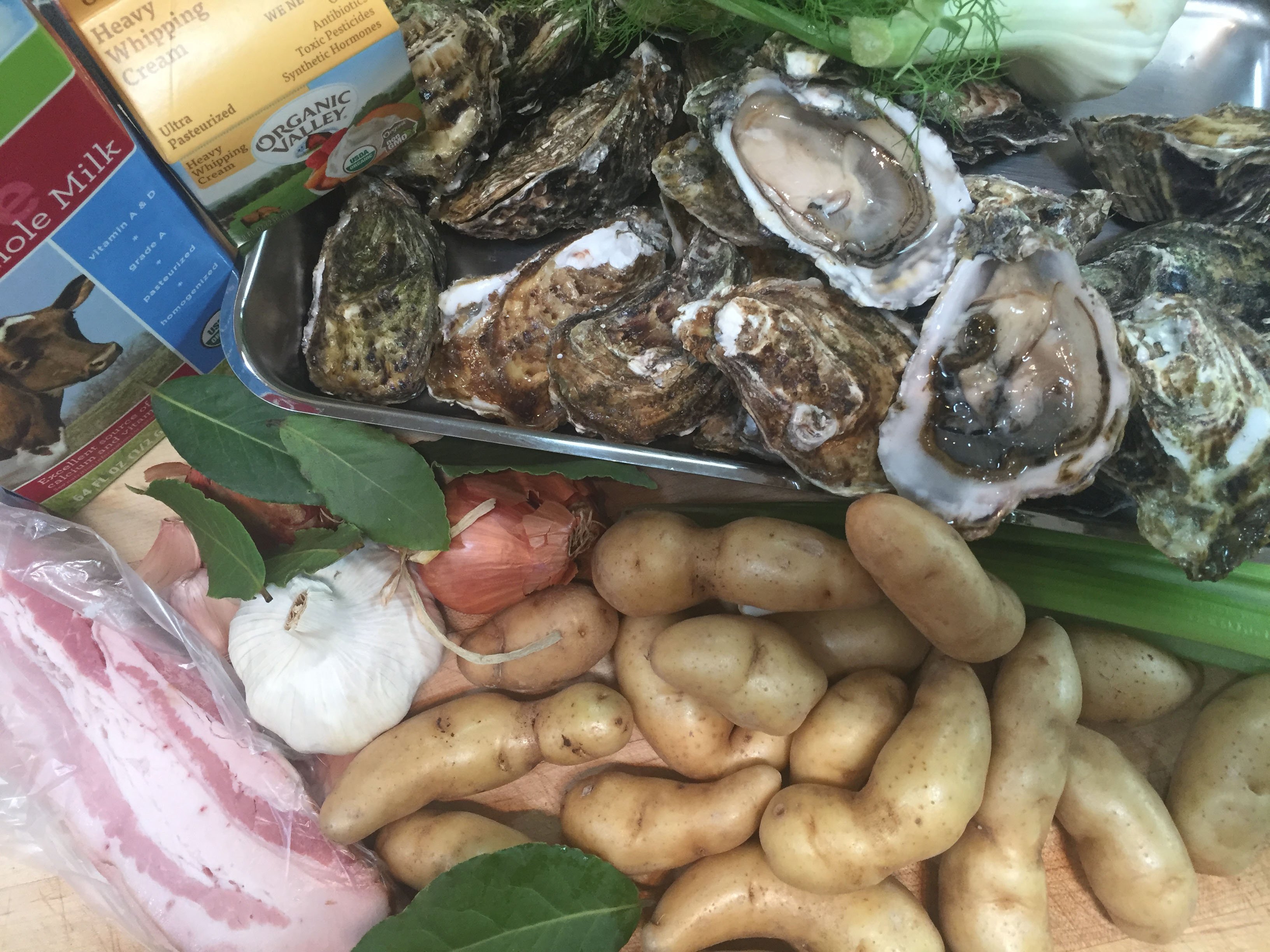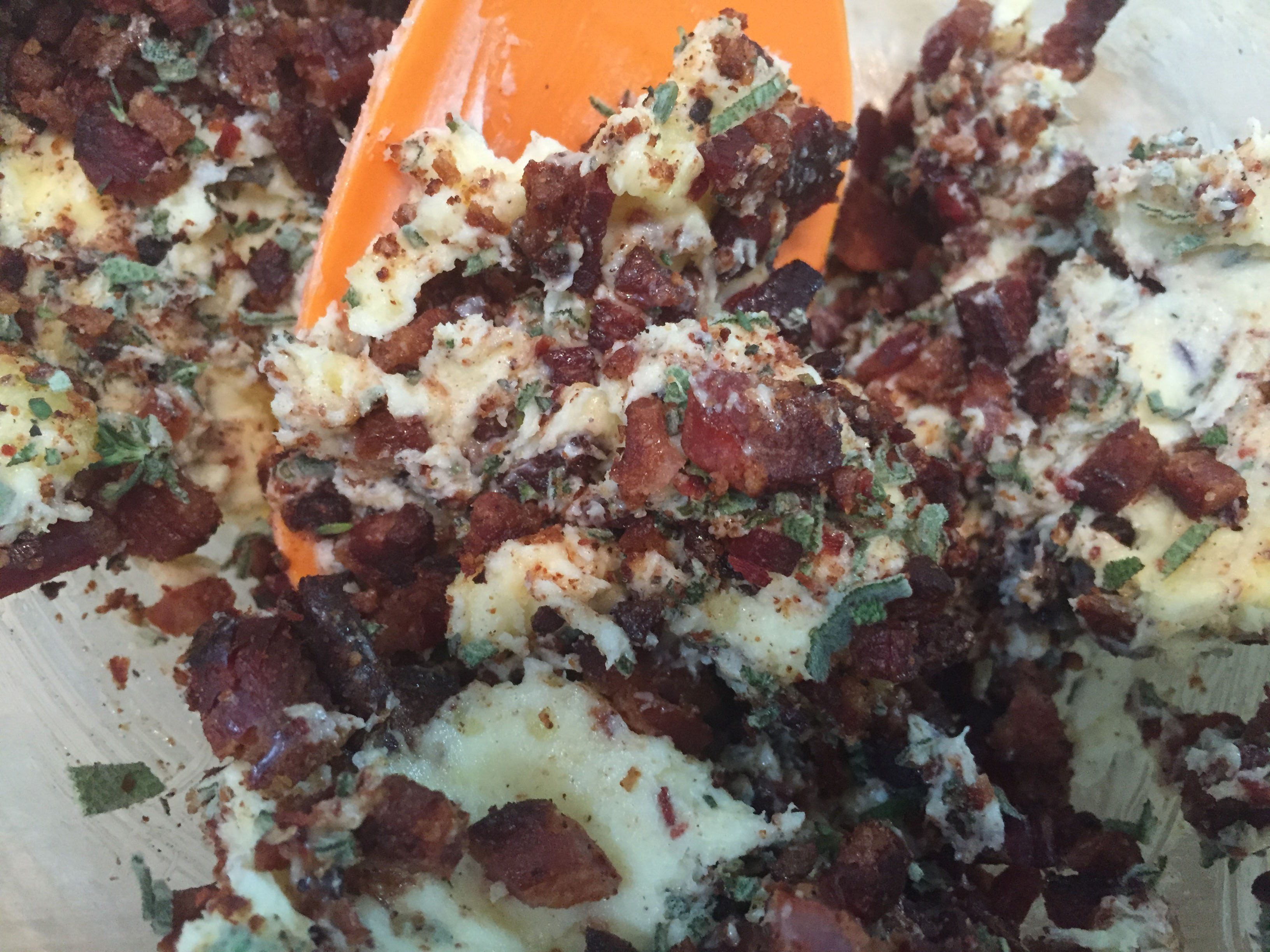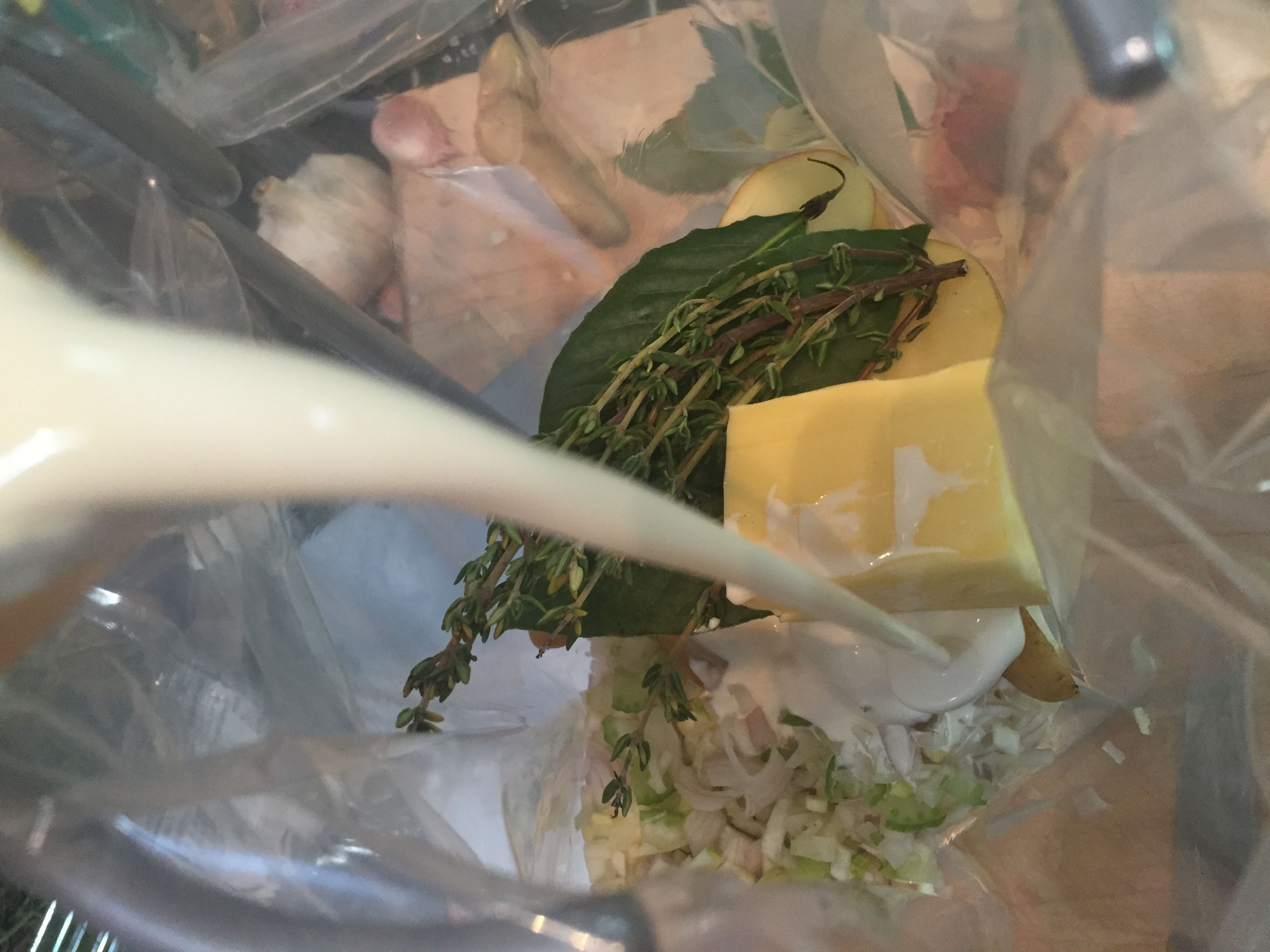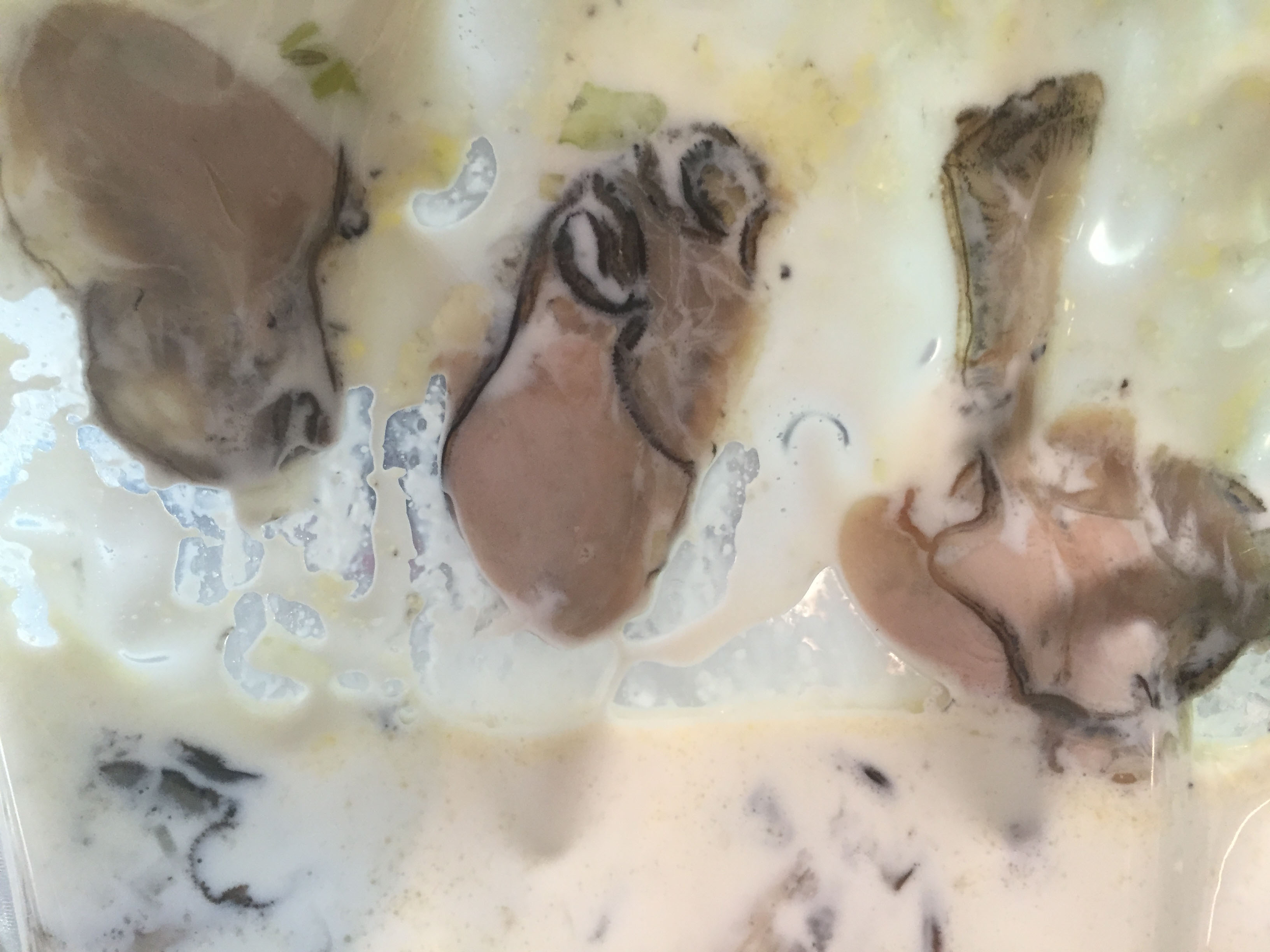Oyster and Fingerling Potato Stew with Bacon Butter

| Léon-Paul Fargue, the late French poet and essayist said
eating a raw oyster was like, “like kissing the sea on the lips”. That thoroughly evocative observation
pinpoints my thoughts on the perfect way to enjoy this ancient bivalve - raw. The late Leon and I are of the same mind along with the millions of others that have enjoyed this briny beauty over the centuries, freshly plucked from the oceans and served raw on the half shell. Surprisingly to me, there are some that just don’t feel the same way, the slippery texture and “minerally” flavor that I love many people find unpleasant and even off-putting. |
|
One classic recipe that can bridge the gap between raw and cooked is the venerable oyster stew. Granted, Arsters’ “He Stew” from James A. Michener's classic novel “Chesapeake", thoroughly cooked his oysters in a sizzling bath of bacon fat. But there are some that take a much gentler approach and one that comes to mind is one of New York City's most iconic dishes, the oyster pan roast at the venerable Oyster Bar in Grand Central Station. Essentially what most of us refer to as oyster stew, this “pan roast” (which actually never roasts or even sees an oven) has been on the menu since the restaurant opened over 100 years ago. |
| Utilizing individually sized, commercial, stainless
steel, steam-jacketed kettles set right at the bar allows “pan roasts” made to
order. This contraption which is similar to a double boiler has steam
sandwiched between the outer steel wall and an inner steel wall that actually
hold the contents of the pan. The high heat steam accelerates the cooking
process, which is critical as both the dairy and the delicate oysters in the
stew can easily overcook. Yet, delicious as it is, it’s still a cooked oyster
dish. As good as the steam jacketed kettles are they are nowhere near as precise as the sous vide technique. Cooking the oysters at precisely 48°C/118°F in the SV1 water bath for about twenty minutes plumps up the flesh offering an almost silky resilient texture yet still retains the fresh briny flavor of the raw original. |
|
| So today I offer you a two pronged approach to the oyster
stew with two cooking temperatures. The first is the stew base that’s flavored
with the usual suspects along with fennel and fingerling potatoes. Reason being the base needs a higher cooking
temperature for the vegetables and seasonings to cook properly and for the
flavor to fully develop and that temperature is far too high for the oysters.
So after the base is cooked and properly chilled, the oysters and their liquor
are added to the base in a new bag, vacuum sealed, then cooked at 48°C/118°F to
preserve their raw attributes and gently heat the finished stew. The other wonderful advantage to this method is that everything is done and ready to have in minutes when you need it - the perfect solution to home cooks and professional chefs alike. The final addition is a nod to Arsters “He Stew” but rather than sizzling bacon a generous nugget of bacon butter seasoned with fresh sage, thyme and black pepper lazily melts over the top. |
| For the Bacon Butter: • 4 ounces unsalted "sweet” butter, softened • 4 pieces of bacon, thick sliced, high quality, cooked crisp and chopped • 6 sage leaves, freshly chopped • 1 tablespoon thyme leaves, freshly chopped • 1/2 teaspoon black pepper
|
For the Oyster and Fingerling Potato Stew with Bacon Butter: • 1 1/2 pounds fingerling potatoes, cleaned and split lengthwise • 2 medium shallots, finely diced • 1/2 medium fennel bulb, finely diced • 1 large celery rib, finely diced • 2 large garlic cloves, minced • 3 sprigs thyme, fresh • 3 whole bay leaves, fresh • 3 cups milk, whole • 1 cup heavy cream • 2 dozen oysters, shucked, liquor reserved • To taste kosher salt • To taste black pepper • To taste hot pepper sauce • Parsley, for garnish • Fennel fronds, for garnish • 1 tablespoon bacon butter, see recipe, per person |
|
Directions: For the Bacon Butter: 1. Combine all ingredients in food processor and process until smooth. 2. Scrape onto a piece of plastic wrap and shape into a log. 3. Refrigerate for several hours, up to several days. 4. Slice the butter into 1/4 inch rounds. |
| For the Oyster and Fingerling Potato Stew with Bacon Butter: 1. Preheat the VacMaster SV1 to 85C/185F degrees 2. Using the VacMaster Bag Filler and an appropriate sized VacMaster bag add the potatoes, shallots, fennel, celery, garlic thyme and bay leaf. 3. Carefully pour in the milk and cream and using a VacMaster chamber machine vacuum seal the bag and place in the SV1 4. Cook for 60 to 90 minutes or until the potatoes are cooked and tender but not falling apart. 5. Remove the bag from the SV1 and immediately chill in an ice bath and refrigerate. 6. Preheat the SV1 to 48C/118F 7. Open the chilled stew and remove the thyme and bay leaves and discard. 8. Using the VacMaster Bag Stand and an appropriate sized VacMaster bag add the cooked stew to the new bag. 9. If shucking your own oysters carefully lift the oysters out of their liquid, checking for bits of shell and sand. 10. Pass the liquid through a fine strainer to remove any sand or bits of shell. 11. Add the oysters and their strained liquid to the stew and using a VacMaster Chamber machine vacuum seal the bag. 12. Place the bag in the SV1 and cook for 20 minutes. 13. Carefully pour the stew into individual soup bowls or large soup tureen and top with the bacon butter. 14. Garnish with the herbs and serve immediately. |
|

